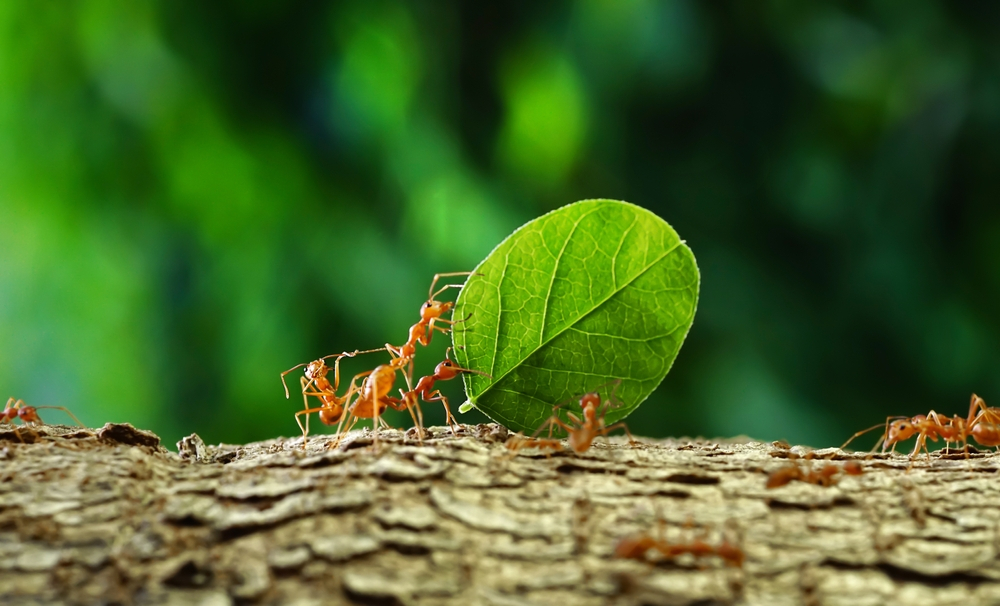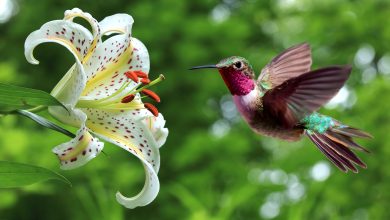The Secret Lives of Insects: Cool Bug Facts You Need to Know

Insects are among the most diverse and fascinating creatures on our planet, comprising over a million known species with countless more yet to be discovered. These tiny animals play crucial roles in our ecosystems, from pollinating plants and decomposing organic matter to controlling pest populations and serving as a food source for other wildlife. Understanding the behavior and ecology of insects is essential for appreciating their importance and ensuring their conservation. By exploring their secret lives, we can gain deeper insights into the delicate balance of nature and the ways these incredible creatures contribute to the health of our planet.
Fascinating Insect Facts
1. Ants: The Ultimate Team Players
Ants are renowned for their incredible ability to work together as a unified force, displaying cooperative behavior that rivals even the most efficient human organizations. Living in vast super colonies that can contain millions of individuals, ants operate with remarkable coordination and communication. They use pheromones—chemical signals—to communicate vital information such as food sources, danger, and pathways, creating an intricately connected network within the colony.
Additionally, many ant species exhibit fascinating farming and herding habits. For instance, leafcutter ants actively cultivate fungus gardens by collecting plant material, which they then decompose and use to grow their food source.
Similarly, some ants “herd” aphids, protecting them from predators in exchange for honeydew, a sugary substance the aphids produce. These sophisticated behaviors underscore the ants’ status as ultimate team players in the insect world, demonstrating advanced social structures and survival strategies.
2. Bees: Nature’s Pollinators
Bees play an indispensable role in pollination, which is critical for the reproduction of many flowering plants and the production of a significant portion of the food we consume. As they move from flower to flower, bees transfer pollen, facilitating the growth of fruits, vegetables, and seeds. Beyond their ecological importance, bees are known for their complex social structure within colonies, which includes a queen, worker bees, and drones. Each member has specific roles that ensure the colony’s survival and efficiency.
Worker bees, for example, are responsible for foraging, caring for the young, and maintaining the hive. One of the most fascinating aspects of bee behavior is their communication method known as the “waggle dance.” This unique dance conveys information about the location, distance, and quality of food sources to other bees in the hive, showcasing their sophisticated means of cooperation and coordination. Through these intricate social structures and remarkable communication methods, bees demonstrate their unparalleled efficiency and critical role in the environment.
3. Butterflies: Masters of Transformation
Butterflies are renowned for their extraordinary life cycle, a metamorphosis that takes them from caterpillar to adult butterfly. This transformation begins with an egg that hatches into a larva, or caterpillar, which spends its time voraciously eating to grow and amass energy for the next stage. After reaching a sufficient size, the caterpillar forms a chrysalis, entering the pupal stage where a remarkable transformation occurs inside.
Emerging as a butterfly, the final stage of their life cycle, these beautiful creatures play a vital role in ecosystems. They act as pollinators, aiding in the reproduction of many flowering plants, and serve as important indicators of ecological health. Additionally, some butterflies showcase fascinating migratory patterns.
For instance, the Monarch butterfly undertakes an arduous journey spanning thousands of miles from North America to central Mexico, demonstrating not only the resilience but also the intricate biological processes that drive such migrations. Understanding these patterns highlights the significance of butterflies in ecosystem dynamics and the importance of their conservation.
4. Beetles: Earth’s Unsung Heroes
Beetles are often overlooked, but they are truly unsung heroes of our planet, playing a crucial role in decomposition and nutrient cycling. By breaking down plant and animal material, beetles help return vital nutrients to the soil, thus maintaining the health and productivity of ecosystems. There are thousands of beetle species, each with its unique characteristics that adapt them to different environments.
For instance, dung beetles are industrious recyclers, rolling and burying animal dung which enriches the soil and reduces parasites. Notably, some beetles have developed fascinating defense mechanisms like bioluminescence. For example, certain species of click beetles emit light to deter predators, making them not only ecologically beneficial but also incredibly intriguing. The diversity and ecological importance of beetles underscore their essential role in maintaining the balance of nature.
5. Dragonflies: Aerial Acrobats
Dragonflies are some of nature’s most skilled fliers, exhibiting incredible aerial abilities that enable them to perform complex maneuvers with precision. Their two pairs of wings can operate independently, allowing them to hover, fly backward, and even pivot mid-air to catch prey. These remarkable flying techniques make dragonflies highly efficient hunters, capable of capturing insects with a success rate of up to 95%.
Historically, dragonflies have intrigued humans for centuries, appearing in various cultural artifacts and myths as symbols of change and adaptability. They boast an impressive evolutionary history, with ancestors dating back over 300 million years, making them one of the oldest groups of flying insects.
In modern ecosystems, dragonflies play a crucial role in controlling mosquito populations, as they prey on both adult mosquitoes and their aquatic larvae. By keeping these pest populations in check, dragonflies contribute significantly to maintaining the balance and health of their habitats, highlighting their ecological importance and the need for their conservation.
Cool and Unusual Insect Behaviors
1. Camouflage and Mimicry
Camouflage and mimicry are fascinating survival strategies employed by various insects to evade predators and enhance their survival chances. Insects like the stick insect and leaf insect are masters of camouflage, blending seamlessly into their surroundings by mimicking the appearance of twigs and leaves. This natural disguise makes it incredibly challenging for predators to detect them, allowing these insects to go about their activities unnoticed.
On the other hand, mimicry as a defense mechanism is equally intriguing. The viceroy butterfly, for example, mimics the warning coloration of the toxic monarch butterfly. Predators who have experienced or learned to avoid the monarch due to its unpalatable taste tend to steer clear of the viceroy as well, providing the latter with a significant survival advantage. Both camouflage and mimicry showcase the incredible adaptability of insects, revealing nature’s ingenuity in developing deceptive tactics for survival.
2. Bioluminescence
Bioluminescence is a captivating natural phenomenon where living organisms produce and emit light. In the insect world, this remarkable trait is most famously exhibited by fireflies and glow-worms. These insects use their unique ability to produce light for various purposes, such as attracting mates, deterring predators, and luring prey. Fireflies, for instance, create mesmerizing light patterns during courtship displays, which are species-specific and allow them to find compatible mates.
Glow-worms, the larval or wingless female stages of certain beetle species, produce a steady glow to attract flying insects, which they then capture and consume. The chemical reaction behind bioluminescence involves the enzyme luciferase acting on the molecule luciferin, producing light with minimal heat. This natural light show not only adds a magical touch to nocturnal landscapes but also serves as a testament to the incredible diversity and adaptability of insects in their ecological niches.
The Importance of Insects in Ecosystems
Insects play an indispensable role in maintaining the delicate balance of ecosystems, contributing in various critical ways. One of their most vital functions is pollination, which is crucial for food production. Bees, butterflies, and other insects transfer pollen from one flower to another, facilitating the reproduction of numerous plants, including many crops essential for human consumption. Without these pollinators, our food supply would drastically diminish.
Insects also aid in soil aeration and decomposition, processes vital for soil health. Earthworms, ants, and beetles tunnelling through the soil create spaces for air and water to circulate, improving root growth and nutrient absorption. Additionally, insects contribute to breaking down organic matter, returning essential nutrients to the soil.
Furthermore, insects provide natural pest control by predating on harmful species. Ladybugs, for instance, consume aphids that could otherwise devastate crops and gardens. Through these incredible contributions, insects support robust ecosystems, emphasizing the need to protect and conserve their populations.
How to Attract Beneficial Insects to Your Garden
Creating an insect-friendly garden is both rewarding and vital for maintaining a thriving ecosystem. To attract beneficial insects, focus on providing diverse habitats by planting a variety of flowers, shrubs, and trees that bloom at different times throughout the year. This ensures a continuous supply of nectar and pollen. Incorporating native plants is particularly effective, as they are well-suited to local insect species.
Additionally, creating small water sources like birdbaths or shallow dishes with pebbles can help sustain insects during dry spells. The benefits of attracting pollinators such as bees and butterflies, as well as beneficial predators like ladybugs and lacewings, cannot be overstated. These insects assist with pollination, enhancing the yield and health of your plants, and provide natural pest control by preying on harmful insect species.
Recommended plants to foster a healthy insect population include milkweed and wildflowers for pollinators, and herbs such as dill and fennel for attracting beneficial predators. By following these tips, you can cultivate a garden that not only thrives but also supports the crucial role insects play in our ecosystem.
Conclusion
The Secret Lives of Insects: Cool Bug Facts You Need to Know has taken us on an incredible journey through the diverse and fascinating world of insects. From the impressive evolutionary history and ecological importance of dragonflies to the mesmerizing light shows of bioluminescent insects, we’ve seen just how varied and vital these tiny creatures are. We’ve explored the cunning survival tactics of camouflage and mimicry, as well as the indispensable roles insects play in pollination, soil health, and natural pest control. This trove of knowledge underscores the sheer diversity and adaptability of insects, demonstrating their crucial contributions to ecosystems around the globe.
As we reflect on these amazing facts, let’s embrace a newfound appreciation for these vital creatures and the roles they play. Insects are not just pests; they are essential allies in maintaining the health of our environment. By understanding and valuing their contributions, we can make informed choices to protect and conserve their populations.
We encourage you to support insect conservation efforts in any way you can. Simple actions like planting native flowers, reducing pesticide use, and creating insect-friendly habitats in your garden can make a significant difference. By fostering a more insect-friendly world, we contribute to the health of our ecosystems and ensure that future generations can continue to marvel at the secret lives of these incredible bugs. Join us in celebrating and protecting these indispensable creatures, and together, we can sustain the delicate balance of nature.




